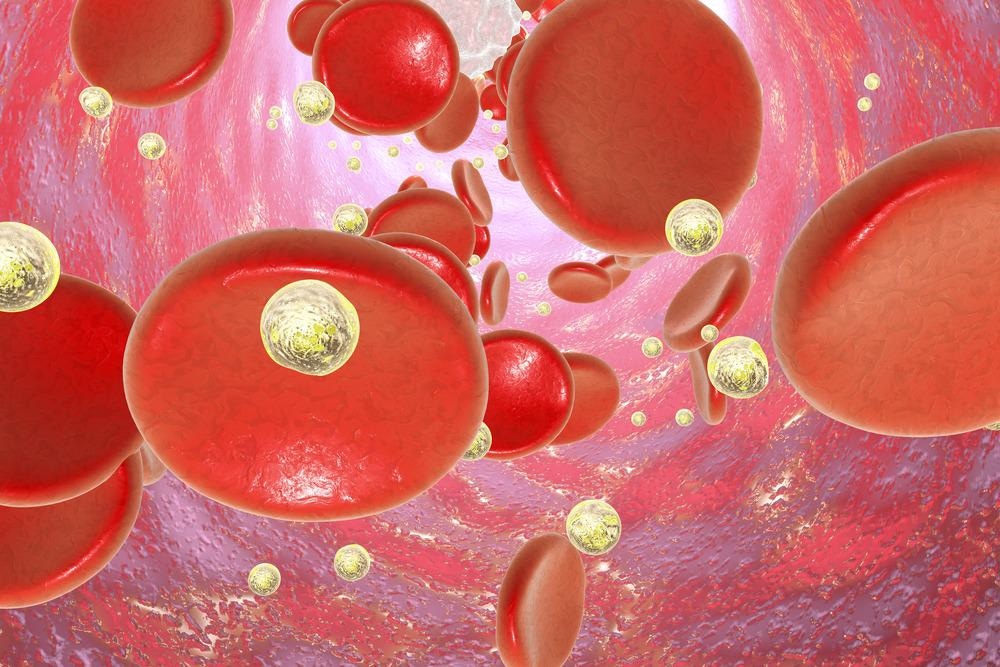In this article, innovative research, which has been conducted in an attempt to fabricate gelatin nanoparticles (NPs) of a smaller size than traditional gelatin NPs, will be considered.

Image Credit: Billion Photos/Shutterstock.com
Advantages and Disadvantages of Gelatin Nanoparticles
Nanoparticles have recently become of more interest in the biomedical industry due to their extensive advantageous properties.
Firstly, they have a large surface area to volume ratio, which is extremely beneficial in a drug delivery context as it means that the drug is more likely to interact with the target area, and thus achieve its desired effect.
Gelatin is a natural biopolymer with a vast array of potential biomedical applications in various industries, such as drug delivery and gene therapy. It is derived from collagen via a hydrolysis reaction, which is usually sourced from animals.
A crucial advantage of utilizing gelatin NPs is the fact that they are greatly biocompatible.
This is vital for biomaterials as it means that they will illicit minimal immune response from the body, thus there is a lower chance of rejection. As well as this, gelatin is biodegradable, possesses good adhesive abilities, is easily and readily available in abundance, and is relatively cheap.
Furthermore, the surface of gelatin NPs can be functionalized which helps to promote triggered drug delivery profiles to specific sites in the body and with modifiable release rates. Gelatin is also widely regarded as safe for use for medical applications.
Due to being denatured, it has very low antigenicity since they are derived from collagen, and hence do not produce any harmful by-products when they degrade.
The main limitation of gelatin NPs for biomedical applications is their size; although on the nanoscale, gelatin NPs are relatively large, which could potentially be problematic and result in a less effective drug delivery system, or even accumulation of nanoparticles around the liver which can result in medical complications.
Consequently, this necessitates further research into techniques that could fabricate gelatin NPs of a smaller size. Previous research has been published to remedy this issue, but often at the expense of valuable gelatin properties.
Freeze-thawing Fabrication Technique of Gelatin Nanoparticles
A group of scientists from Chonnam National University recently conducted research in which they successfully designed and produced gelatin NPs of a smaller size using a freeze-thawing technique without sacrificing the vast beneficial properties of conventional gelatin NPs.
The general method for fabricating the small size (<100nm) gelatin NPs involved dissolving and rapidly decreasing the temperature of a gelatin solution to compress the gelatin molecules (and hence reduce their size), followed by crosslinking and freeze-drying.
A key benefit to this method is its simplicity and, due to the sufficient detail in the published study, it is easily reproducible.

Image Credit: Kateryna Kon/Shutterstock.com
The authors of the study found that the newly developed smaller-sized gelatin NPs demonstrated superior cell viability, as well as a faster drug release rate when compared with conventional gelatin NPs and gelatin microparticles, which is likely to be due to the increased surface area of the smaller gelatin NPs.
Furthermore, the drug release profile can be successfully altered by modifying the concentration of the drug. The fabricated <100nm gelatin NPs have great potential in drug delivery and possess the benefits of any gelatin-based medical device, whilst overcoming the weaknesses of standard gelatin NPs.
Applications of Gelatin Nanoparticles
Due to the impressive qualities of these small-size gelatin NPs, there is a wide variety of possible applications for which they could be used. Firstly, they could be utilized for targeted drug delivery for diseases such as cancer, where the anticancer drug should only affect tumor sites and not healthy tissue.
They could also be employed for other carrier systems, for example DNA or vaccines. Another interesting potential usage could be for targeting brain disorders, as gelatin NPs have been shown to have the ability to cross the blood-brain barrier.
Gelatin NPs could also be used for tissue engineering applications and could be exploited for the fabrication of scaffolds, e.g., for skin wounds or artificial organ replacement. Moreover, some studies have suggested that gelatin NPs possess bactericidal properties when combined with silver NPs, further confirming the wide-reaching potential applications of this product.
Further Work and Concluding Remarks
The work done by the scientists from Chonnam National University provides a substantial basis for improving the effectiveness of gelatin NPs in drug delivery and other biomedical applications; however, it is still imperative that further research is conducted before this can be applied clinically.
Future research should involve testing the gelatin NPs with specific drugs and ensuring efficacy. Additionally, the gelatin used is derived from porcine skin; therefore, research could be conducted to investigate alternative sources not derived from animals as this could decrease risk of rejection.
Future studies could also investigate the specific type of material the NPs are fabricated into for their applications, e.g., hydrogels, foams, sponges etc. In conclusion, it can be expected that these new small-size gelatin NPs will be of great value to the biomedical industry in the near future and will be able to be used in lots of exciting applications.
References and Further Reading
Coester, C. J., et al. (2000). “Gelatin Nanoparticles by Two Step Desolvation--a New Preparation Method, Surface Modifications and Cell Uptake.” Journal of Microencapsulation, vol. 17, no. 2, pp. 187–193, pubmed.ncbi.nlm.nih.gov/10738694/,
Foox, Maytal, and Meital Zilberman. (2015). “Drug Delivery from Gelatin-Based Systems.” Expert Opinion on Drug Delivery, vol. 12, no. 9, pp. 1547–63, www.ncbi.nlm.nih.gov/pubmed/25943722,
Gwon, Yonghyun, et al. (2021). “A Freezing and Thawing Method for Fabrication of Small Gelatin Nanoparticles with Stable Size Distributions for Biomedical Applications.” Tissue Engineering and Regenerative Medicine, https://link.springer.com/article/10.1007/s13770-021-00380-x
Hathout, Rania M., and Mohamed K. Omran. (2015). “Gelatin-Based Particulate Systems in Ocular Drug Delivery.” Pharmaceutical Development and Technology, vol. 21, no. 3, pp. 379–386, https://www.tandfonline.com/doi/abs/10.3109/10837450.2014.999786
Sahoo, Nityananda, et al. (2015). “Recent Advancement of Gelatin Nanoparticles in Drug and Vaccine Delivery.” International Journal of Biological Macromolecules, vol. 81, pp. 317–331. Accessed 22 Mar. 2021. https://www.sciencedirect.com/science/article/abs/pii/S0141813015005413
Spicer, Christopher D. (2019). “Hydrogel Scaffolds for Tissue Engineering: The Importance of Polymer Choice.” Polymer Chemistry, https://pubs.rsc.org/en/content/articlelanding/2020/py/c9py01021a
Yasmin, Rehana, et al. (2017). “Gelatin Nanoparticles: A Potential Candidate for Medical Applications.” Nanotechnology Reviews, vol. 6, no. 2, https://www.degruyter.com/document/doi/10.1515/ntrev-2016-0009/html
Disclaimer: The views expressed here are those of the author expressed in their private capacity and do not necessarily represent the views of AZoM.com Limited T/A AZoNetwork the owner and operator of this website. This disclaimer forms part of the Terms and conditions of use of this website.